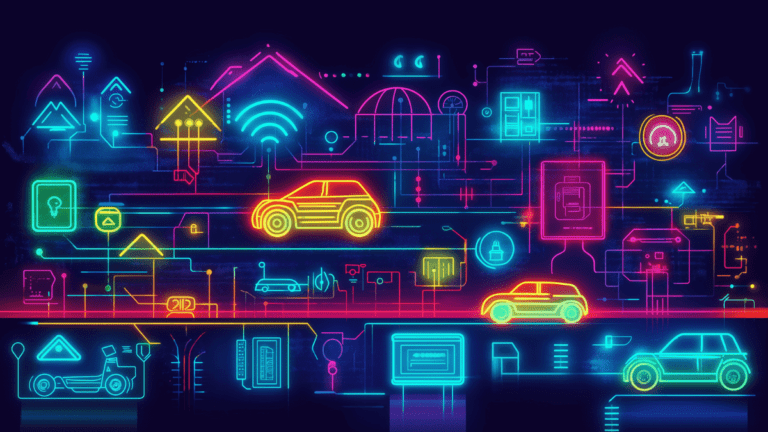Modern technology has led to the rise of self-driving cars. While advantageous in some aspects, the autonomous vehicle concept introduces cybersecurity challenges. There is also innovation and concern with aviation cybersecurity and autonomous aircraft.
Here’s what you need to know about next-generation liabilities and how industry professionals must tackle them.
What Cybersecurity Challenges Do Next-Gen Vehicle Technologies Have?
Keeping pilots and passengers safe is the priority of aviation and auto cybersecurity. However, these three challenges make it more complex.
1. Compromised Data Privacy
Compromised data privacy is one of the chief concerns for cybersecurity professionals. Modern vehicles connect with humans and each other to make transportation more efficient. Data collection is necessary for vehicle-to-vehicle (V2V) and vehicle-to-everything (V2X) technology, leaving the door open for intruders. A self-driving car risks revealing the driver’s name and other cybersecurity challenges. Companies that don’t protect information risk significant financial losses and compromised reputations.
The risk also extends to autonomous aircraft. They carry passenger information, flight logs, and the aircraft’s real-time coordinates. Breaching the firewall means sensitive data is at risk for the entire crew. For instance, the plane’s intellectual property could be at risk if thieves can see its design and various software programs. The onboard cargo is another risk, as companies rely on aircraft for supply chain transportation.
2. Multiple Entry Points
Aviation and vehicle cybersecurity are at risk with autonomous machines because of their increased entry points. Cars have become more intelligent, with Wi-Fi and Bluetooth becoming prominent. However, self-driving machines bring more security liabilities because they rely on software and more complex technologies. Additional entry points mean more opportunities for outside threats due to increased wireless connectivity.
Self-driving cars’ vulnerabilities originate with the onboard sensors. Autonomous vehicles rely on LiDAR and cameras to understand what happens around them. Outsiders can manipulate the information and confuse the machine, leading to malfunctions. Aircraft’s vulnerable entry points include their communication systems, sensors, and other ground control mechanisms. The onboard avionic networks also pose a danger to those onboard because of their target level.
3. Malware Attacks
Autonomous vehicles and aircraft don’t have computer screens and monitors but are still vulnerable to traditional attacks. For example, self-driving cars are susceptible to malware that could severely damage their operating systems. A 2023 Cluster Computing study said malware could drain a vehicle’s power and increase latency with V2V communications, thus leading to traffic congestion and passenger safety.
This cybersecurity risk could significantly impact the transportation industry because of the rise of self-driving semi-trucks. These heavy-duty vehicles rely on advanced artificial intelligence (AI) and are integral to the future of supply chains. Outsiders could infiltrate a truck’s software to shut down systems or divert the vehicle’s direction. These delays could significantly affect logistics companies and damage reputations with suppliers.
How Can the Industry Aid Aviation and Car Cybersecurity?
The automotive and aviation industries are trending toward autonomous machines, so vehicle and aviation cybersecurity innovations are critical. Here are three ways professionals can safeguard these assets.
1. Sophisticated Hardware Systems
Protecting cars and planes starts with sophisticated hardware systems able to resist outside attacks. For autonomous vehicles, these mechanisms should include hardware security modules (HSMs) and redundant sensors to protect the software. HSMs shield the driver’s information and prevent intrusion into the infotainment systems.
Autonomous aircraft have much of the same cybersecurity technology as a self-driving car. However, there are a few additions to make planes more sophisticated with their hardware. For instance, you’d likely see flight control computers to manage the operations and thwart hacks. Encrypted communication between ground control is also integral to flight safety.
2. Authentication
Authentication is another vital addition to vehicle and aviation cybersecurity. Users inside and outside the machines need access to perform necessary tasks, so each person must constantly authenticate their identity to minimize risk. How essential is authentication? A 2023 Cybersecurity and Privacy study said authentication was an effective countermeasure in an autonomous vehicle’s framework.
Authentication is also vital to operating fully autonomous aircraft, which run sophisticated autopilot systems and are often the machine’s primary source of control along the flight path. Many modern planes are intelligent enough to land by themselves, demonstrating their power. Aircraft necessitate authentication to prevent flight control tampering and steady navigation — otherwise, the passengers are at risk.
3. Secure Software Updates
Tech integration means autonomous vehicles rely on constant software updates. These changes may include cybersecurity patches or updated controls to prevent bugs while on the road. While these updates are standard practice, developers must ensure they are secure when sent over the air (OTA). The vehicles risk malicious code or other damaging manipulation if the updates aren’t safe.
OTA updates must include features like multifactor authentication, digital certificates, and end-to-end encryption. Tamper detection is sometimes overlooked but is critical to ensuring the integrity of each update. Software providers should consider regular but minor updates to decrease the attack surface. This strategy reduces liability and shrinks the risk of outside manipulation.
Ensuring Robust Vehicle Cybersecurity
A strong security infrastructure is integral regardless of the industry in which you work. The automotive and aviation sectors have significantly increased their dependence on cybersecurity systems for smooth operations. People rely on these transportation methods daily, so protecting data and entry points is critical to avoid downtime and financial losses.
These liabilities mean cybersecurity professionals have more to handle with a self-driving car and autonomous aircraft. A holistic security approach is necessary to safeguard these systems and prevent outside attacks. Hardware and updates should be secure, and users must constantly authenticate their identities to prevent unwanted attacks.
The opinions expressed in this post belongs to the individual contributors and do not necessarily reflect the views of Information Security Buzz.




